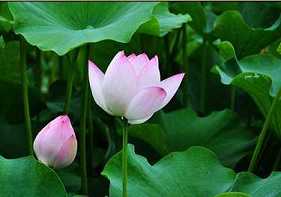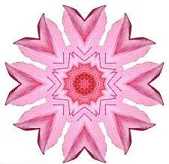六元素
发布时间:2022-05-19 10:32:34作者:华严经全文网六元素
[作者]坦尼沙罗尊者
[中译]良稹
Six Properties
by Ven. Thanissaro Bhikkhu
In English we have a very limited vocabulary for describing how the body feels from the inside. We feel “tingly” or we feel “heavy.” We have ants crawling on our skin or butterflies in our stomachs. There are not that many words, and nothing really systematic. This is where the Buddha’s teaching on the properties is helpful. It provides a systematic way of categorizing the feelings you have in the body—how the body feels from the inside—along with a sense of what you can do with those feelings. This teaching also gives you a very clear sense of how much your present input shapes the way you experience the body, and an immediate, very visceral way of using that present input to balance things out, to make the body an easier place in which to settle down.
英语中,形容从身内感受身的词汇极其稀缺。我们有麻刺感,我们有沉重感。我们有蚁爬皮肤之感,胃中蝶动之感[1]。词汇不那么多,也没有真正的系统性。正是在这方面,佛陀有关元素[界,属性]的教导就十分有益了。它为身内的觉受——也就是从身内体验身的感觉——提供了一个系统的分类方法,同时使你领悟到对那些觉受可以如何应用。这套教导还使你明见,你的当下输入,在如何塑造你对身的体验上,起着多大的作用,同时也为你提供了一个直达、亲历的方法,利用当下的那种输入,达到[元素的]平衡,使身体成为易于定居之处。
The texts list the properties as six: earth, water, wind, fire, space, and consciousness. It sounds like medieval chemistry. We’d do better though, to look at these properties as ways of categorizing the sensations that make up the way the body feels from the inside. The earth sensations are feelings of heaviness or solidity; water would be cool sensations; fire is of course warm; wind is the motion back and forth; space is the feelings of emptiness; and consciousness is the property that’s aware of all these things.
经典上共列出六种元素[2]:地、水、风、火、空间、意识。听起来像是中世纪化学。不过,我们最好把这些元素看成是从身内对身之诸觉受的归类法。地即是沉重、坚硬感;水则是清凉感;火当然是暖热感;风是来回的动感;空间是空性感;意识是觉知所有这一切的那个元素。
The theory behind these properties is that they get provoked. In other words, as they get emphasized, as some incident strengthens them or kicks them into action, they get stronger. On the external level, natural events occur when the external properties get provoked. Floods come from the provocation of the water property; huge fires or intense heat, from the provocation of the fire property; huge winds, from the provocation of the wind property. Interestingly, the texts also attribute earthquakes to the wind property. This means that wind refers not only to the wind in the air, but also to the motion down in the earth. Apparently earth was the only property that wasn’t provokable, on the external level at least, but it would move when the wind property got into the act.
元素理论认为,诸种元素是可以被激发的。换句话说,随着它们被倚重,随着某些事件把它们壮大或者把它们猛然发动,它们就强大起来。外在层次上,当外元素被激发时,就会发生自然界的事件。水灾来自水元素的激发。大火或强热,来自火元素的激发。狂风来自风元素的激发。有意思的是,经典上把地震也归因于风元素。这就意味着,风不仅指空中的风动,也指地内的动态。地似乎是唯一不可激发的元素,至少在外在层次,不过当风元素参与时,它也会移动。
Whatever we may think of these concepts as ways of describing external events, they’re a very useful way of looking at internal events, at the experience of the body as sensed from within. Classically, the internal properties are used to explain disease. Giddiness or lightheadedness is a sign of too much wind property, a sign that the wind property has been provoked. With fever, of course, the fire property has been provoked. A feeling of lethargy or heaviness in your limbs is a sign of too much earth property.
不管我们对这些概念作为外在事件的描述方式有什么想法,它们对观察内在事件,观察从内部体验到的身感来说,是十分有用的。在古代,内元素被用来解释病理。头晕眼花是风偏重的症象,是风元素被激发的症象。发烧当然是火元素的激发。四肢无力或沉重,则是地元素偏胜的症象。
These are things you can play with in your meditation. That’s where the teaching really becomes useful, because it allows you to see how the way you focus on the body has an impact on how you perceive the body, how you actually sense the body. We think of sensations as being primary, the raw material, the basic building blocks of experience, but there are conscious decisions being made that precede the sensations. Look at the teaching on dependent origination. Sankhara, or “fabrication” is way down there, prior to the sensations you feel in terms of form, feeling, and so forth.
这些东西是你在禅定中可以操作一番的。这套教说正是在此处真正显其有用,因为它让你看见,你怎样专注身体,会直接影响你怎样辨识身体,以及你怎样实际地觉受到身体。我们以为觉受是原生的,是未加工的材料,是体验的基本构件,然而,先于这些觉受,你已经在作种种有意识的决定了。看一看十二因缘的教导。 Sankhāra——造作,早早先于你在色、受等方面的觉知,已经在那里了[3]。
So how are you going to fabricate the body? If there are feelings of tension in the body, sometimes that’s a sign of too much earth property, so you can think of the breath. This is one of the reasons we start with the breath. It’s the property that’s most easily manipulated—classicallyit’s called the kaya-sankhara, the factor that fashions the body. It’s also the property that most directly works through tension. Wherever there’s a sense of tension, focus on it and see if you can get a sense of gentle, healing motion going through it. The potential for motion is there, simply that the perception contributing to the tension has blocked it. So you can consciously decide that you’re going to perceive motion there. Give it a chance to happen, and the potential for motion, the potential for movement through that part of the nervous system, will get strengthened, will get aroused—which may be a better way of translating the word that I just translated as “provoked.” The breath-potential gets aroused. When your awareness of the breath is aroused or heightened, it can move through that sense of blockage.
因此,你打算怎样造作身?如果身内有紧绷感,有时那是地元素偏胜的征象,因此你可以观想气。这是我们禅修从观气[风,呼吸]出发的原因之一。它是最容易操纵的那个元素——经典上,它叫做 kāya-sankhāra——身造作[身行],塑造身体的因素[4]。它也是最直接地消解张力的元素。哪里有紧绷感,你就定在那里,看是否能够使一种温和的、修复性的动性[气]穿过它。动性[气]的潜势是在那里的,只不过促成紧绷感的那个辨识把它给堵住了。因此,你可以有意识地决定,你打算在那里辨识动性[气]。给它一个发生的机会,那么动性[气]的潜势,穿过那部分经络系统的移动的潜势,将会被强化,将会被唤起 [aroused]——比起我刚才用的“激发” [provoked],这个译法可能更好。气的潜势被唤起。当你对气的觉知被唤起或者说提升时,它就可以穿透那股堵塞感。
When you’re feeling giddy or manic, you can think of the earth property to settle things down. If there’s just too much frenetic energy in the body, you can think of your bones being made of iron, of your hands and feet weighing a ton. Wherever you have a sense of solidity in the body, focus on that and try to magnify it. You find that your choice of the image you’re using, your purpose in choosing it, will really affect the way you start sensing that part of the body. Then you can take that sensation and spread it out, connecting it with other sensations of solidity in the body. The potential for solidity is always there.
当你感到晕眩或狂躁时,可以观想地元素,使那些感觉平静下来。如果体内有太多躁乱的能量,你可以观想自己的骨胳由铁质构成,你的手脚有千斤重。凡是体内有坚硬感的地方,要专注那里,试着把它放大。你会发现,你所用的形象,你选择那个形象的目的,真的影响你怎样开始感受到那个部位。接着,你可以把那个感受,传播开去,与体内其它地方的坚硬感连接起来。坚硬性的潜势,一直是在那里的。
When you’re feeling depressed and weighed down, think of lighter sensations, of the breath giving a lift to the different parts of the body. When you’re hot, think of the water property. Focus on whatever sensations in the body are cooler than the others. Really keep your focus right there, and think “water, water” or “cool, cool.” You’ll find that other cool sensations in the body will appear to your awareness. The potential for them was waiting, simply that they needed the element of present intention to highlight them.
当你感觉抑郁、重压时,可以观想比较轻的觉受,可以观想气把身体各个部分提升一下。你感到热的时候,可以观想水元素。专注凡是体内比较清凉的地方。要把注意力真正定在那里,一边想“水,水”,或者“凉,凉”。你将发现体内的清凉感会对你的觉知显现出来。它们的潜势伺伏着,只是需要那个当下动机的成分把它们彰显出来。
When you’re feeling cold, focus in on warmth. There will be some part of the body that’s warmer than the others, so focus in on it. Think of the warmth staying there and spreading to other parts of the body where other warm sensations will get aroused.
当你感觉寒冷时,就专注暖热。身体一定有某个部位比其它部位更暖,因此就专注那里。观想那个热性呆在那里,并且传播到身体的其它部位,那里的热感将会给唤起。
You can do this at any stage in the concentration, although it’s most effective when the breath is still. At that point the body feels like a cloud of mist, little points of sensation, and each little sensation has the potential to be any one of these four properties. When your sense of the body is reduced to what the French would call pointillism, it’s a lot easier, simply with a thought, to emphasize either the heaviness or the lightness, the movement, the warmth or the coolness of those sensations, the sensation-potentials you’ve got there. This way you accomplish two things at once. On the one hand you balance out the body. Whenever one type of sensation feels too oppressive, you can think of the opposing sensation to balance it out. On the other, you start seeing the role of present intention in your awareness, in your experience of the present moment in a very visceral way.
你可以在定的任何阶段这样做,不过在气寂止时最有效。那时候,身感像一团雾,一团细小的觉点,每个小觉知都有成为这四种元素之任一的潜势。当你的身感还原到法语所说的 pointillism——“点彩”时[5],要想只用一个意念,来强化诸身感之中的重性或者轻性,动性或者暖性、凉性,做起来就容易多了,那些觉受潜势你那里已经存在着。这样你同时成就了两件事。一方面,你平衡了身体。任何时候,你觉得某一种觉受过于压抑,你可以观想对立的那个觉受,使之平衡。另一方面,你在以一种极其切身的方式体验当下的过程中,开始看见当下的动机在你的觉知中的作用。
When things grow very still and balanced in terms of these four properties, with this mist of potential sensations that can go in any direction(any kind of sensation?), you can also focus on the space between the points. Realize that the space is boundless. It goes through the body and out in all directions. Just think that: “infinite space.” Stay with the sensation of infinite space that comes along with the perception. The potential for it is always there; it’s simply that the perception arouses it. It’s a very pleasant state to get in. Things seem a lot less solid, a lot less oppressive. You don’t feel so trapped in the body.
当这四元素达到极其寂止、平衡,存在这股可以朝任一[身感的]方向转化的觉受潜势之雾时,你也可以专注那些点之间的空间。你要意识到,那个空间是无边界的。它穿过身体,朝向各个方向。你就观想:“无限空间。” 定在随着那个辨识而来的无限空间感中。该潜势是一直在那里的;只不过那个辨识把它唤起了。进入这个状态里是极其愉悦的。那里似乎坚硬感弱了许多,压抑感弱了许多。被困在身内的感觉也不那么强了。

Ajaan Fuang once had a student, an old woman, who started practicing meditation with him when he was getting ready to leave Wat Asokaram. After he left, she had to practice on her own for quite a while. One evening, when she was sitting in meditation with the group in the meditation hall, a voice came to her and said, “You’re going to die tonight.” She was a little taken aback, but then she reminded herself, “Well, if I’m going to die, the best way is to die meditating.” So she just sat there and watched to see what would happen as the body dies, to see what it would be like. There was an actual sensation of the body beginning to fall apart. “All of the various properties were going their separate ways,” she said, “like a house on fire. There was no place in the body where you could focus your awareness and have any sense of comfort at all.” So for a moment she felt lost, but then she remembered, “Well, there’s the space property.” So she focused in on the space property, and all that sense of the house on fire suddenly disappeared. There was a very strong sense of infinite space. There was always the potential to go back to the body. (This is something you’ll notice when you’re at this point in your meditation: There are the spots that could provide a potential for the form of the body but you chose not to focus on them. Instead you focus on the sense of space in between and all around. There’s a sense of boundlessness that goes with it.
阿姜放过去有个弟子,是一位老妇人,前来开始跟他学修禅定时,他正在准备离开阿育王寺。等他离开后,很长时间里她不得不自己修练。有天晚上,她在禅堂与大家共修时,有一个声音来对她说,“今晚你会死。” 她有点吃惊,不过,她接着提醒自己,“ 好吧,如果要死,最好是死在禅定当中。”于是她就坐在那里,观察身体死去时发生什么。真有一种身体开始破散的感觉。“各种元素都各自分开,走自己的路,”她说,“就像一座着火的房子。身内没有一处可以让觉知安定下来,得到舒适感。”于是,有一阵子,她不知所措,不过接着她想起来:“噢,还有空间元素。”于是她就定入了空间元素,所有那些房子着火的感觉突然消失了。有一股极其强烈的无限空间感。回到身体的可能性总是存在的。(你的禅定达到这个程度时将会注意到这一点:有些部位可以提供体形的潜势,不过你选择不专注那里[6]。而是专注它们相互之间和四周的那个空间感。伴随着它的是一股无边无界之感。)
When she came out of meditation, of course, she hadn’t died. She was still alive. But she had learned an important lesson, that when things get really bad in the body you can always go to space. Even though it’s not Awakening, and it’s not the unconditioned, still it’s a lot better than being immersed in turmoil along with the properties in the body.
她出定时,当然没有死去。她还活者。不过她学到了重要的一课,当身内的情形实在糟糕时,总是可以去空间。即使它不是觉醒,它不是非缘起,它仍然强过住于身元素,沉浸在混乱之中。
So the properties provide a useful way of looking at the potentials in the present moment. They also make it easier to get to that sense of awareness itself that you read about so much in the writings of the Thai Ajaas. Once you’re with infinite space, drop the perception of “space” and see what’s left. There will just be a perception of knowing, knowing, knowing, which takes its place. You don’t have to ask, “Knowing what?” There’s just awareness, awareness, or knowing, knowing.
因此,诸元素提供了一个观察潜势的有用方式。它们还使我们更容易达到泰国导师们的文字当中如此频繁提到的那个独立的觉知。一旦你住于无限空间后,你可以放开“空间”的辨识,看看剩下什么。那时只会有一种知,知,知的辨识。你不必问“知什么?”只有觉,觉,或者说知,知。
Once you’ve got everything divided up into properties like this, you’ve got the raw materials for gaining insight. The terms of analysis may initially seem strange, but once you get a visceral sense of what they’re referring to, you’ll find them extremely useful. They not only give the mind a good place to settle down in the stillness of concentration, but they also help you gain insight into the way perception shapes your experience of the body, shapes your perception of what’s going on here in the present moment, seeing how fabricated it all is. You’ve got potentials coming in from past kamma, but you’ve also got the element of present choice, which becomes extremely clear when you analyze things in this way.
一旦你达到以这种方式把一切归分为诸元素时,你就有了证得洞见的原材料。这些分析词汇可能最初看起来怪异,不过,一旦你切身领会到它们指的是什么,你将发现它们极其地有用。它们不仅给心一个定止下来的好地方,而且还帮助你洞见辨识如何塑造身感,如何塑造你对当下正在发生之事,使你懂得所有这些何以都是造作的。你有来自旧业的潜势,但你也有当下选择的成分,那种选择在你用这个方式分析时,就极其明显起来。
When I first went to stay with Ajaan Fuang, he had me memorize Ajaan Lee’s Divine Mantra: six passages dealing with the different properties. For a long time it seemed very foreign to me until one night I was chanting the passage on the property of consciousness and Irealized that it was referring to the awareness that’s right here. This awareness. Right here. When this realization hit, it was as if a huge iceberg in my heart suddenly melted. I wasn’t dealing with some outside, foreign frame of thinking; instead, it was something extremely direct, immediate, right here and now. That was when I began to get a sense of why Ajaan Fuang had asked me to memorize the chant, why he wanted all of his students to think about their present experience in terms of the properties.
我最初去跟阿姜放修习时,他要我把阿姜李的《神圣咒文》[7]背下来:那是关于各种元素的六个段落。有很长一段时间,它对我来说似乎毫不相关,直到有一个晚上,在持诵意识元素那一段时,我意识到它指的是就在此处的觉知。就是这个觉知。就在此处。意识到这点时,仿佛我心里的一块巨大的冰山突然融化了。我在持诵的不是什么外在、无关的思维框架;反之,它是某种极其直接、紧接、就在此地此刻的东西。那时候,我才开始懂得为什么阿姜放要我背诵这段诵文,为什么他要他的所有弟子都从元素的角度思考他们的体验。
So keep this mode of analysis in mind. Try to get some sense of it as you put it to use, and you’ll find that it’s extremely useful in the practice. As with all of the Buddha’s teachings, the importance of the teaching is what you do with it, and what it does for you in helping to gain insight into how stress and suffering are created in the present moment—and how you don’t have to create them, if you pay attention, if you work at these skills.
因此,把这个分析模式记在心里。在应用它时,试着领悟它,你将发现它对修持极其有用。一如佛陀的全部教说,它的重要性在于你用它做什么,它在获得苦的洞见方面能帮助你做什么——也就是怎样帮助你看见,苦在当下是如何被造作起来的,你又如何不需要造作它,假若你用心观察,假若你修练这些技能。
(根据2003年3月某日开示录音整理,本文来自坦尼沙罗尊者开示集《禅定》)



